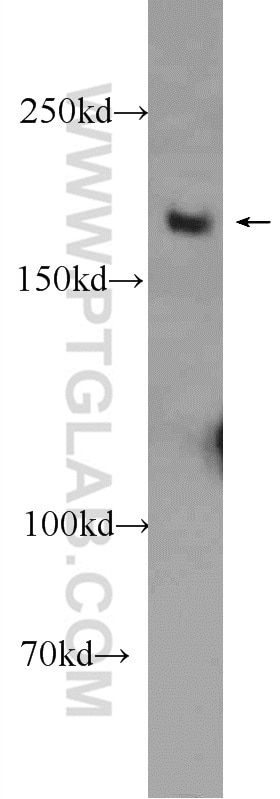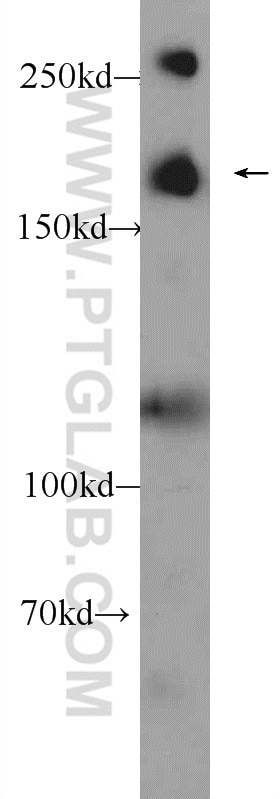WRN Polyklonaler Antikörper
WRN Polyklonal Antikörper für WB, ELISA
Wirt / Isotyp
Kaninchen / IgG
Getestete Reaktivität
human
Anwendung
WB, ELISA
Konjugation
Unkonjugiert
Kat-Nr. : 25269-1-AP
Synonyme
Geprüfte Anwendungen
| Erfolgreiche Detektion in WB | MCF-7-Zellen, HEK-293-Zellen |
Empfohlene Verdünnung
| Anwendung | Verdünnung |
|---|---|
| Western Blot (WB) | WB : 1:200-1:1000 |
| It is recommended that this reagent should be titrated in each testing system to obtain optimal results. | |
| Sample-dependent, check data in validation data gallery | |
Produktinformation
25269-1-AP bindet in WB, ELISA WRN und zeigt Reaktivität mit human
| Getestete Reaktivität | human |
| Wirt / Isotyp | Kaninchen / IgG |
| Klonalität | Polyklonal |
| Typ | Antikörper |
| Immunogen | Peptid |
| Vollständiger Name | Werner syndrome, RecQ helicase-like |
| Berechnetes Molekulargewicht | 162 kDa |
| Beobachtetes Molekulargewicht | 162 kDa |
| GenBank-Zugangsnummer | NM_000553 |
| Gene symbol | WRN |
| Gene ID (NCBI) | 7486 |
| Konjugation | Unkonjugiert |
| Form | Liquid |
| Reinigungsmethode | Antigen-Affinitätsreinigung |
| Lagerungspuffer | PBS with 0.02% sodium azide and 50% glycerol |
| Lagerungsbedingungen | Bei -20°C lagern. Nach dem Versand ein Jahr lang stabil Aliquotieren ist bei -20oC Lagerung nicht notwendig. 20ul Größen enthalten 0,1% BSA. |
Hintergrundinformationen
Werner syndrome ATP dependent helicase (WRN) ,also named as RECQ3 or RecQ protein like 2, is a 1432 amino acid protein, which contains one HRDC domain, one helicase C-terminal domain, one helicase ATP-binding domain and 3'-5' exonuclease domain. WRN localizes in the nucleoplasm and belongs to the helicase family. WRN plays a central role in the repair of methylation-induced DNA damage and has an helicase activity necessary to prevent dramatic telomere loss during DNA replication. WRN gene mutation has an association with Werner syndrome and colorectal cancer.
Protokolle
| PRODUKTSPEZIFISCHE PROTOKOLLE | |
|---|---|
| WB protocol for WRN antibody 25269-1-AP | Protokoll herunterladen |
| STANDARD-PROTOKOLLE | |
|---|---|
| Klicken Sie hier, um unsere Standardprotokolle anzuzeigen |



